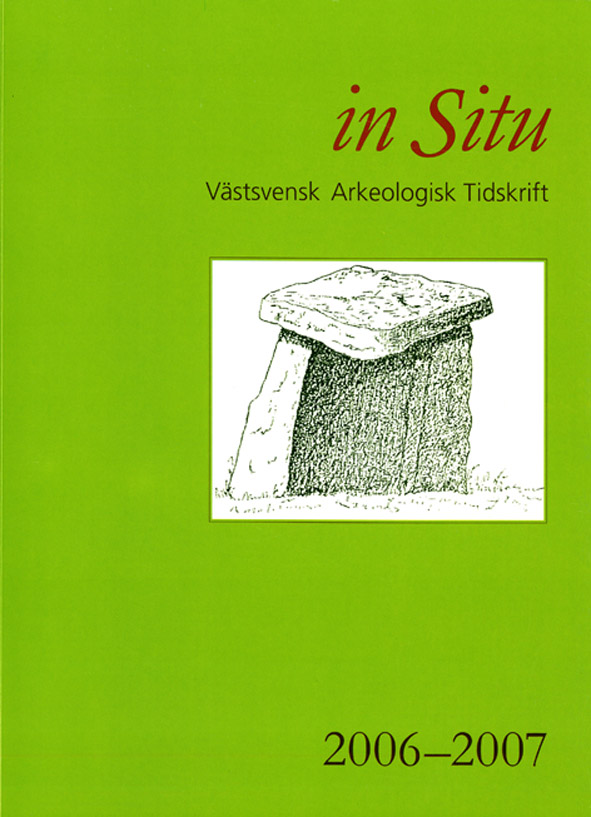Döden i Anderstorp socken
DOI:
https://doi.org/10.58323/insi.v7.13441Keywords:
Archaeology, MegalithsAbstract
The Iron Age dolmen is a rare type of grave spread only over a small geographical area; mainly along the border between the counties of Halland and Småland in the Southwest of Sweden. The Iron Age dolmen is constructed like a house out of four flat stones. Three stones stand as walls partly dug down into the ground and the fourth is placed on top like a roof. The opening created by the fourth missing wall always faces south. Only a handful of these dolmens have ever been excavated, one by the museum of Jönköpings län in 2007. By finds or by C14 analysis these graves have been dated to the period 400–650 AD. The dolmens either stand by themselves or they can be part of a surrounding stone setting. The free-standing dolmen is here compared to five other types of graves containing dolmens or similar constructions. It is argued in this article that they are all part of the same kind of burial rituals, reflecting a shared religious context.
Downloads
Downloads
Published
How to Cite
Issue
Section
License
Authors contributing to In Situ Archaeologica agree to publish their articles under a Creative Commons License. This gives third party different rights to use the material under certain conditions. These rights is defined by which license the article is published and it is the third partly responsibility to ensure that the license is fullfilled in any re-use of the material. Authors always retain copyright of their work and any re-use of the material presumes that appropriate credit is given the author, a link is provided to the license, and any changes made are clearly indicated.



